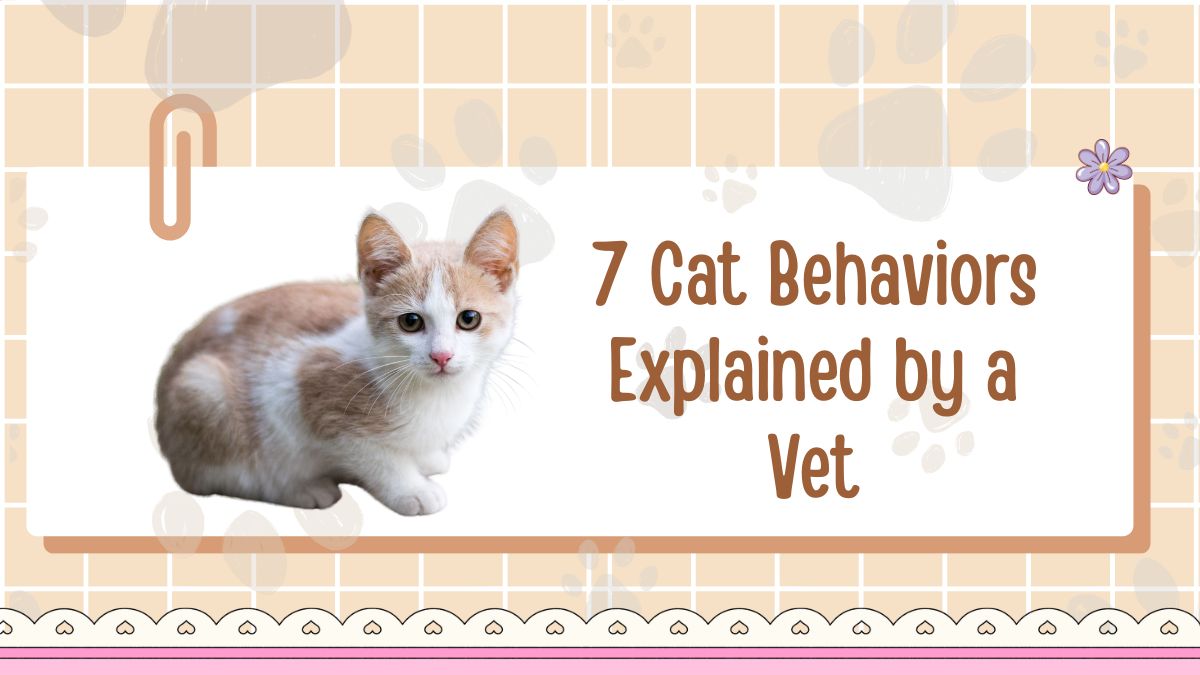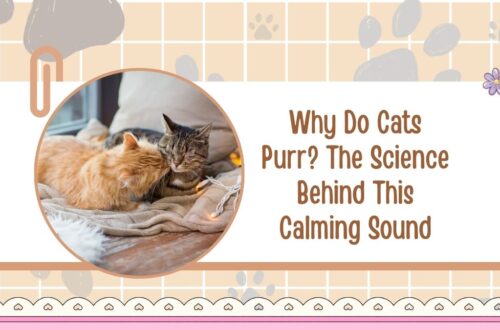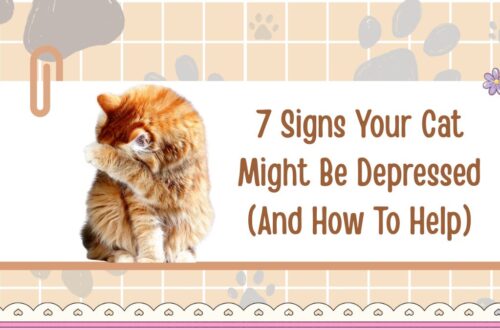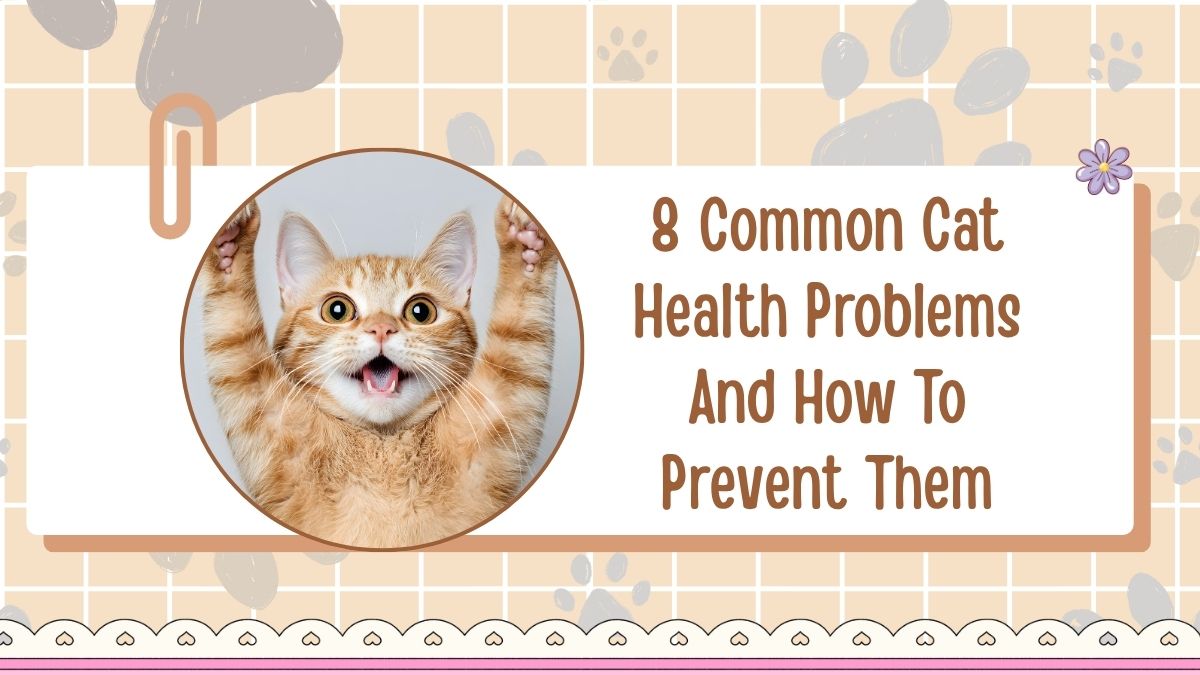Our feline companions often leave us scratching our heads when they exhibit quirky behaviours. But behind every twitch, purr, zoom and rub lies a natural instinct, a communication attempt or sometimes a health signal.
From the viewpoint of a veterinarian, understanding these behaviours helps us bond with our cats and also catch signs of stress or illness early.
In this article we’ll explore seven distinct cat behaviours, explain why cats do them, and highlight when they might indicate something more serious. Attention to detail and the most recent expert veterinary commentary are included.
Table of behaviours
| # | Behaviour | What it looks like | Vet-explained reason | When to be concerned |
|---|---|---|---|---|
| 1 | Kneading (“making biscuits”) | Cat rhythmically pushes front paws into a blanket, you or cushion. | Carry-over from kittenhood nursing; comfort & marking. | If it becomes obsessive, with drooling, biting or skin issues. |
| 2 | Sudden bursts of energy (“zoomies”) | Cat dashes around the house, leaps, runs in circles. | Release of pent-up energy and natural hunting instinct. | If frequent, accompanied by frantic behaviour, or in older cats newly appearing. |
| 3 | Slow blinking / rubbing against you | Cat gives you a slow blink, rubs its head or body on your leg. | Sign of trust, marking you with scent glands, showing affection. | If replaced by avoidance, fear body language, hiding. |
| 4 | Drinking from faucets or moving water | Cat prefers running tap or streams over bowl. | Instinct: moving water is fresher; curiosity and sensory appeal. | If bowl water is dirty or cat avoids drinking – dehydration risk. |
| 5 | Eating grass / nibbling plants | Cat suddenly munches blades of grass or indoor plants. | Aids digestion/hairball elimination; instinctive. | If plant is toxic or ingestion of non-plant items persists. |
| 6 | Knocking things over / bringing “gifts” | Cat bats items off table; brings you a toy, dead insect or small object. | Hunting instincts, exploration, boredom relief, attention-seeking. | If destructive behaviour escalates, or cat appears anxious. |
| 7 | Urinating outside the litter box / spraying | Cat pees outside litter box, sprays walls/windows. | Stress, territory marking, possible urinary/medical issues. | This is a major red flag—medical check needed immediately. |
Behaviour 1: Kneading
When your cat slowly and rhythmically presses its paws into a blanket, cushion or your lap, that’s the classic kneading behaviour. At its heart, it’s a throw-back to kittenhood: kittens knead the mother’s tummy to stimulate milk flow.
Veterinary behaviourists explain that in adulthood this motion signals comfort, security and affection. Many cats knead because they associate the motion with being safe and cosy.
It can also serve as territory marking, because cats have scent glands in their paw pads. By kneading, they may be depositing their scent on you or your furnishings.
Tips for owners
- Let your cat knead—you can view it as a compliment.
- But if their claws annoy you, keep nails trimmed and place a blanket between you and the cat.
- If kneading becomes very frequent, aggressive, or accompanied by drooling, biting, or changes in mood—check with your vet.
Behaviour 2: Zoomies (Frenetic Random Activity Periods)
That moment when your cat suddenly takes off across the room, leaps onto furniture, spins, darts around—yes, that’s the zoomies (also called FRAPs).
According to vets, this is usually a completely normal behaviour: indoor cats have energy to burn, they may be mimicking hunting or sensing the crepuscular (dawn/dusk) instinct.
What to watch out for
- If zoomies happen in response to play and then stop: fine and healthy.
- If they’re constant, very intense, or happening in older or diseased cats—then it could signal issues like hyperthyroidism, pain, stress or anxiety.
How to channel zoomies
Behaviour 3: Slow Blinking & Rubbing
When your cat looks at you and slowly closes and opens its eyes, that slow blink means: I trust you. Similarly, when your cat rubs its cheeks or body against your leg or furniture, it’s marking and bonding.
This is a positive behaviour—one you want to encourage, as it indicates the cat feels safe, secure and connected to you.
Note
If instead your cat avoids eye contact, flattens ears, hides—that’s a sign of stress, fear or pain. Pay attention.
Behaviour 4: Drinking from Faucets / Preference for Flowing Water
You might wonder why your cat ignores its water bowl but loves the running tap. According to vet-insights: moving water appears fresher, and in the wild cats are wired to avoid stagnant water.
This behaviour can be harmless and normal. But if you notice your cat refuses bowls, is drinking little or drinking excessively—worth checking hydration and kidney/urinary health.
Owner tip
Keep the water bowl clean, changed daily, placed away from the food bowl. Some cats prefer a water fountain and running water.
Behaviour 5: Eating Grass or Nibbling Plants
When your cat wanders into the garden or nibbles indoor grass, it might seem odd—but vets say there is reason: grass may help with digestion or hairball elimination.
However, some plants are toxic to cats—so ensure that the grasses/plants your cat has access to are pet-safe.
When it becomes a problem
- If the cat is eating non-edible objects (plastic, strings) or chewing plants excessively—could be pica (eating non-food items) which may signal gastrointestinal or neurological issues.
- Monitor for vomiting, diarrhea or change in appetite.
Behaviour 6: Knocking Things Over / Bringing “Gifts”
Why does your cat bat items off the table or bring you a dead insect or toy? The explanation lies in its hunting and exploratory instinct. Even well-fed indoor cats retain the urge to bat, stalk and pounce.
Knocking objects over might be “play” or a curious investigation. Offering safe alternatives and redirecting can help.
When to be alert
If your cat is destructive, obsessive about knocking things, or suddenly starts bringing items excessively—could signal boredom, stress, territory issues or even compulsive behaviour.
Behaviour 7: Urinating Outside the Litter Box / Spraying
Often one of the most frustrating behaviours for cat owners, but also one of the most important. When a cat urinates outside the litter box or sprays walls/windows, it can mean stress, territory marking, medical issue.
Medical conditions like urinary tract infection, bladder stones, pain while urinating are frequent underlying causes. Because cats hide pain, behavioural changes often show first.
What to do
- First check for medical causes via your vet (especially males for urinary blockages).
- Ensure litter boxes are clean, sufficient in number (especially for multi-cat homes), placed in quiet areas.
- Address environmental stressors: new pets, new furniture, changes in routine.
Detailed Explanation of Why These Behaviours Matter
While many of these behaviours seem “cute” or odd, they serve an important role:
- Communication: Cats use behaviours instead of vocalising like dogs. Their body language, paw movements, play or rest patterns tell us about their comfort and environment.
- Instinct Preservation: Many domesticated cats still act on instincts inherited from their wild ancestors—hunting, marking, hiding, sudden activity bursts.
- Health Indicators: Subtle changes in behaviour often hint at trouble—decreased grooming, avoidance, sudden increase in energy, or inappropriate elimination can all signal a health issue.
- Bonding and Environment: When we understand our cat’s behaviours, we can enhance their environment, reduce stress, improve wellbeing—and ultimately improve our relationship with them.
Understanding your cat’s behaviour is like learning a new language—one of subtle movements, instinctual drives and unique quirks.
By examining these seven behaviours through a veterinary lens, you gain not only insight into why your cat does what it does—but also how to support their emotional and physical health.
Whether it’s kneading on your lap, tearing around the house at midnight, or choosing the tap over a water bowl, each behaviour offers a clue into your cat’s mind and wellbeing.
Embrace these moments, provide the right environment, stay observant for changes—and your bond with your feline friend will grow stronger, healthier and more harmonious.
FAQs
Not necessarily—but if your cat suddenly increases kneading, especially if accompanied by licking/sucking of blankets, drooling, or claw digging, it may be a sign of anxiety or a compulsive behaviour. Consult your vet.
Usually the zoomies are harmless. But if an older cat suddenly starts frequent, frantic sprints, it may signal pain, cognitive dysfunction, hyperthyroidism or other medical issues. A vet check is recommended.
Rubbing against you is a positive bonding behaviour. Scratching furniture is also natural (claw maintenance + territory marking). Instead of punishing, provide dedicated scratching posts and keep claws trimmed. This supports natural behaviours.




